Mary Anne Yarde's Blog: The Coffee Pot Book Club , page 180
April 12, 2018
Life in the time of the West Country Rebellion by Mary Anne Yarde #History #Monmouth #Rebellion
By Mary Anne Yarde
 James Scott, 1st Duke of Monmouth by Willem Wissing
James Scott, 1st Duke of Monmouth by Willem WissingThe West Country Rebellion or the Monmouth Rebellion as it is more commonly known, was an attempt by James Scott, 1st Duke of Monmouth (the illegitimate son of Charles II) to overthrow his uncle, James II.
Monmouth had always been a popular figure in the South West of England. So he confidently landed in Lyme Regis on 11th June 1685. From here he planned to recruit an army amongst his loyal supporters and march on London. By the 15th June, he had a force in excess of 1,000 local supporters. But the King heard of his plans and sent the army to deal with this troublesome nephew. So instead of heading to London, Monmouth headed to Somerset. By the time he reached Chard, he had 6,000 men marching with him. Many of these were farmworkers armed only with pitchforks.
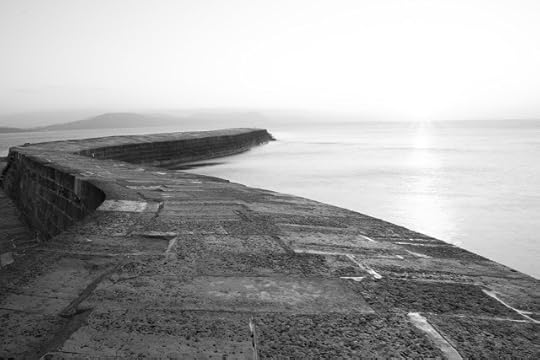 The famous Cobb at Lymn Regis harbour.
The famous Cobb at Lymn Regis harbour.On the 20th June, Monmouth, who was ever confident, was crowned King in Taunton, even though his uncle still sat on the throne. Despite a King’s force of Dragoons who attempted to stop more men joining Monmouth’s ranks, Monmouth recruited a further 800 men to his cause. It was assumed by the King’s forces that Monmouth’s next stop would be at Bristol. Bristol at the time was the largest city after London.
Monmouth and his army continued to travel north, via Bridgwater. Here he took up residence in Bridgwater Castle. From here Monmouth travelled to Glastonbury, Shepton Mallet and Keynsham. His intention had indeed been to take Bristol, but to his dismay, he learnt that Henry Somerset, 1st Duke of Beaufort had got there before him. There were a few skirmishes, but Monmouth overestimated the royalist force in Bristol and retreated. Monmouth then marched his army towards Bath. They camped at a small village called Philips Norton (Norton St. Philip). Monmouth set up his headquarters at the village tavern.
 The tavern where Monmouth set up his headquarters. The George Inn is the oldest tavern in England and it has yet to call last orders!
The tavern where Monmouth set up his headquarters. The George Inn is the oldest tavern in England and it has yet to call last orders!On the 27 June, Henry FizRoy Duke of Grafton (half-brother to Monmouth) led his men into the village. Monmouth was waiting for them. It is said that the blood flowed down Chevers Lane like a river. And in fact, Chevers Lane is now known as Bloody Lane. Grafton’s men retreated, scrambling through the hedges in a desperate bid to get away from the slaughter. This battle in the village is remembered today as The Pitchfork Rebellion.
 Henry FizRoy Duke of Grafton later betrayed James II and joined William of Orange in the Glorious Revolution of 1688
Henry FizRoy Duke of Grafton later betrayed James II and joined William of Orange in the Glorious Revolution of 1688Monmouth then marched his army overnight to Frome, but the morale of Monmouth's army took quite a blow with the news that the Scottish rebellion had failed. And Monmouth’s found to his dismay that his supporters began to desert him.
 Route of Monmouth's army
Route of Monmouth's armyMonmouth took his men to Warminster, but he was cut off at Trowbridge, so turned back and headed towards Shepton Mallet. But by then the Royalist forces had captured Monmouth’s ships which cut of any escape back to the continent.
Monmouth's next stop was in Wells. The army was quartered in Wells Cathedral and did considerable damage in their short stay there.
 Wells Cathedral
Wells Cathedral Monmouth was pushed back from Wells and found himself on the Somerset Levels. But unlike Alfred the Great, this was not Monmouth's defining moment.
Monmouth and his army were finally defeated at the Battle of Sedgmore on 6th July. Monmouth fled but was found by the King's forces two days later hiding in a ditch.
 The Morning of Sedgemoor (1905) by Edgar Bundy
The Morning of Sedgemoor (1905) by Edgar BundyMonmouth’s loyal supporters faced the terror of The Bloody Assizes. The Assizes started in Winchester on the 26th August. The first to fall victim was an elderly woman. The court then proceeded to the West Country. Judge Jefferies — The Hanging Judge — entered Philip Norton and turned the tavern, where Monmouth had once set up his headquarters, into a courtroom. He oversaw 12 executions on the village common. From here the court headed to Salisbury, Dorchester and then onto Wells. Many were imprisoned in the cloisters of Wells Cathedral. 1400 Monmouth supporters were tried in these courts. 330 of which were hung, drawn and quartered.
As for Monmouth, he pleaded for clemency. But there was no forgiveness to be found. He was accompanied by Bishop Thomas Ken of Wells Cathedral, to Tower Hill where he was beheaded. It was not a merciful beheading. It took multiple blows to separate his head from his body. He died on the 15th July 1685. He was 36 years old.
Mary Anne Yarde
 Mary Anne Yarde is the multi award-winning author of the International Bestselling Series — The Du Lac Chronicles. Set a generation after the fall of King Arthur, The Du Lac Chronicles takes you on a journey through Dark Age Briton and Brittany, where you will meet new friends and terrifying foes. Based on legends and historical fact, The Du Lac Chronicles is a series not to be missed.
Mary Anne Yarde is the multi award-winning author of the International Bestselling Series — The Du Lac Chronicles. Set a generation after the fall of King Arthur, The Du Lac Chronicles takes you on a journey through Dark Age Briton and Brittany, where you will meet new friends and terrifying foes. Based on legends and historical fact, The Du Lac Chronicles is a series not to be missed.Born in Bath, England, Mary Anne Yarde grew up in the southwest of England, surrounded and influenced by centuries of history and mythology. Glastonbury — the fabled Isle of Avalon — was a mere fifteen-minute drive from her home, and tales of King Arthur and his knights were part of her childhood.
Mary loves to hear from readers, you can always find her here! You can also find her on Twitter and Facebook
 Amazon US Amazon UK
Amazon US Amazon UK<!-- /* Font Definitions */ @font-face {font-family:"Cambria Math"; panose-1:2 4 5 3 5 4 6 3 2 4; mso-font-charset:0; mso-generic-font-family:auto; mso-font-pitch:variable; mso-font-signature:-536870145 1107305727 0 0 415 0;} @font-face {font-family:Calibri; panose-1:2 15 5 2 2 2 4 3 2 4; mso-font-charset:0; mso-generic-font-family:auto; mso-font-pitch:variable; mso-font-signature:-520092929 1073786111 9 0 415 0;} /* Style Definitions */ p.MsoNormal, li.MsoNormal, div.MsoNormal {mso-style-unhide:no; mso-style-qformat:yes; mso-style-parent:""; margin:0cm; margin-bottom:.0001pt; mso-pagination:widow-orphan; font-size:12.0pt; mso-bidi-font-size:11.0pt; font-family:"Times New Roman"; mso-fareast-font-family:Calibri; mso-fareast-theme-font:minor-latin; mso-bidi-font-family:"Times New Roman"; mso-bidi-theme-font:minor-bidi; mso-ansi-language:EN-US;} .MsoChpDefault {mso-style-type:export-only; mso-default-props:yes; font-size:11.0pt; mso-ansi-font-size:11.0pt; mso-bidi-font-size:11.0pt; font-family:Calibri; mso-ascii-font-family:Calibri; mso-ascii-theme-font:minor-latin; mso-fareast-font-family:Calibri; mso-fareast-theme-font:minor-latin; mso-hansi-font-family:Calibri; mso-hansi-theme-font:minor-latin; mso-bidi-font-family:"Times New Roman"; mso-bidi-theme-font:minor-bidi; mso-ansi-language:EN-US;} .MsoPapDefault {mso-style-type:export-only; margin-bottom:10.0pt; line-height:115%;} @page WordSection1 {size:612.0pt 792.0pt; margin:72.0pt 90.0pt 72.0pt 90.0pt; mso-header-margin:36.0pt; mso-footer-margin:36.0pt; mso-paper-source:0;} div.WordSection1 {page:WordSection1;} </style> --><style><!-- /* Font Definitions */ @font-face {font-family:"Cambria Math"; panose-1:2 4 5 3 5 4 6 3 2 4; mso-font-charset:0; mso-generic-font-family:auto; mso-font-pitch:variable; mso-font-signature:-536870145 1107305727 0 0 415 0;} @font-face {font-family:Calibri; panose-1:2 15 5 2 2 2 4 3 2 4; mso-font-charset:0; mso-generic-font-family:auto; mso-font-pitch:variable; mso-font-signature:-520092929 1073786111 9 0 415 0;} /* Style Definitions */ p.MsoNormal, li.MsoNormal, div.MsoNormal {mso-style-unhide:no; mso-style-qformat:yes; mso-style-parent:""; margin:0cm; margin-bottom:.0001pt; mso-pagination:widow-orphan; font-size:12.0pt; mso-bidi-font-size:11.0pt; font-family:"Times New Roman"; mso-fareast-font-family:Calibri; mso-fareast-theme-font:minor-latin; mso-bidi-font-family:"Times New Roman"; mso-bidi-theme-font:minor-bidi; mso-ansi-language:EN-US;} .MsoChpDefault {mso-style-type:export-only; mso-default-props:yes; font-size:11.0pt; mso-ansi-font-size:11.0pt; mso-bidi-font-size:11.0pt; font-family:Calibri; mso-ascii-font-family:Calibri; mso-ascii-theme-font:minor-latin; mso-fareast-font-family:Calibri; mso-fareast-theme-font:minor-latin; mso-hansi-font-family:Calibri; mso-hansi-theme-font:minor-latin; mso-bidi-font-family:"Times New Roman"; mso-bidi-theme-font:minor-bidi; mso-ansi-language:EN-US;} .MsoPapDefault {mso-style-type:export-only; margin-bottom:10.0pt; line-height:115%;} @page WordSection1 {size:612.0pt 792.0pt; margin:72.0pt 90.0pt 72.0pt 90.0pt; mso-header-margin:36.0pt; mso-footer-margin:36.0pt; mso-paper-source:0;} div.WordSection1 {page:WordSection1;} </style>-->
Published on April 12, 2018 00:21
April 10, 2018
Author’s Inspiration ~ Tracey Warr #amwriting #HistoricalFiction @TraceyWarr1
Please give a warm welcome to historical fiction author, Tracey Warr.
Author’s Inspiration
Nest ferch Rhys: A story of resilience
In a nutshell, the inspirations for my stories of early medieval Europe are history and especially women’s histories, landscapes and maps, material and visual culture, medieval literature and being nosey.
I write about fascinating, early medieval women and Nest ferch Rhys certainly falls into that category. She was the daughter of the last Welsh king of the southern kingdom of Deheubarth. She was the mistress of the Norman king, Henry I; married first one Norman lord in Wales; and then another; was kidnapped by a Welsh prince; and may have had an affair with a Flemish sheriff. All of my novels explore the degree of agency early medieval women had.
The evidenced facts about medieval women are often slender. Research can give me some structure to work with, but then there is plenty of room to imagine in the gaps, to put flesh, psychology, emotion, onto the bones, to make a story come alive by thinking about these people as more than merely names in a genealogy, by thinking about what motivated them. I like to speculate, imagine and write into those gaps. So along with the 10thcentury historian Adalbero of Laon I might say: ‘Know that things did not happen as I have written them, but that everything could have happened thus’.
Carmarthen Bay was the starting point for writing the Conquest novels. I was living in Pembrokeshire and making weekly commutes by train to my teaching job in Oxford, which took me across the spectacular triple river estuary at Carmarthen. Looking at the silhouette of Llansteffan castle at sunset on the headland, I imagined my heroine, Nest, moving through that landscape.

Llansteffan Castle overlooking the triple river estuary of Carmarthen Bay.
My writing is very much generated by an immersion in places. The Pembrokeshire coast is stunning and littered with medieval castles. I visited the Norman castles, steeping myself in the place, stewing the writing. Even when there’s nothing remaining from early medieval times, the lie of the land – a hill, a river, a tree, the birdlife – can give a writer ideas. I go to a place, take photographs, experience it, make notes on how it smells, sounds, feels, looks. At Llansteffan, I walked the cliffs, looked down on the river estuaries and their dangerous tides and sandbanks, watched birds hovering in the wind, and the weather lowering and rain coming in fast. I’ve used all those details in the novels.
In particular, I am fascinated by islands, coastlines, spits, and estuaries. For my second novel, The Viking Hostage, I blended together the real Welsh islands of Caldey and Skomer, which wereactually occupied by Vikings, to create my fictional island. In the Conquest books, I wanted to write as if the landscape and seascape was almost a character itself – like the heath in Thomas Hardy’s The Return of the Nativeor the saltmarsh in Wilkie Collins’ The Moonstone.
The small details you can gain from visiting sites are invaluable. In St Albans Cathedral there is a spyloft, a false wall that monks could stand behind and spy on pilgrims to make sure they didn’t steal the silver from the saint’s shrine. I used that detail in The Drowned Court.
I love maps – I have shoeboxes full of them. As Robert Louis Stevenson said, a map is ‘a mine of suggestion’. I look at old maps to get a sense of how my characters might be moving around on horseback and on rivers. I study building plans. If I really imagine a place or a building, such as the Norman motte and bailey castle at Cardiff that appears in Conquest, then that image of topography and architecture can drive the plot. Certain scenes and events happen because of the layout of a place, because a staircase is broken and rotten, or because a dark undercroft is full of huge barrels.
Nest ferch Rhys is one of the most well-known Welsh medieval women but what is actually known about her is quite thin. Popular notions depict Nest as very beautiful, the Helen of Wales, who men could not resist. Alternatively, given the parade of men in Nest’s life, it is tempting to see her – as some male historians have – as lascivious. My own reading is that she was a potent royal symbol for the territory of south west Wales and was used by this series of men to bolster their hold on it. Making Nest his mistress was a way for King Henry to defuse her symbolic significance and lessen the possibility that she would give either a Welsh prince or one of Henry’s own Norman noblemen the kudos to threaten his power in Wales. When Owain ap Cadwgan did abduct Nest it was a provocation to the Normans, rather than a romantic rescue.
I wanted to present Nest as more than simply a victim of men and her circumstances. How did she emotionally negotiate the vagaries of her sexual career? What were her loyalties in the conflict between the Welsh and the Normans. She had four Norman lovers and husbands and all of her children were half-Norman, but her Welsh family had been massacred by Normans and her Welsh brother was trying to reclaim his kingdom? Nest may not have had a lot of direct power, but she was a resilient survivor.
Because I have a background in art history, a lot of my inspiration is visual –images, objects, illuminated books – which help me create a world for my readers to step into. A delicate pink palm cup and an enamel swan emblem in the British Museum, for examples, appear in the novels. Medieval faces from The Lady and the Unicorn tapestries at the Cluny Museum in Paris influenced the novels.

Detail from The Lady and the Unicorn tapestry in Cluny Museum, Paris.
The nun Benedicta, who had a minor role in the first book of the trilogy, becomes an important parallel heroine in this second book, where she is part of a network of spies working in Normandy on behalf of King Henry and his forceful sister, Countess Adela of Blois. Benedicta’s target for information is Amaury de Montfort, the inveterate enemy of King Henry. Benedicta is based at Fontevraud Abbey which is ruled by women. She uses Ovid’s racy love poetry as the cipher for her spy letters. Literature is another important source for to me. I draw on the poetry of the female troubadours, and other medieval female writers such as Dhuoda. A poem by a Welsh bard plays a significant part in the plot of The Drowned Court.
 The Romanesque Kitchen at Fontevraud Abbey
The Romanesque Kitchen at Fontevraud AbbeyIn addition to historical research, I draw inspiration from contemporary life around me. Novelists need to be nosey and observant. I once saw a couple parting at a bus stop in Oxford and used their body language and gestures to describe a pair of medieval lovers separating in Narbonne. My first heroine, Almodis, is modelled on a statue of the Virgin in Albi Cathedral in France. The appearances of the three heroines in The Viking Hostage, are based on paintings in the National Gallery in London. But my character Nest ferch Rhys is modelled on a very striking, black-haired, blue-eyed Welsh girl I saw on a train between Swansea and Carmarthen.
Tracey Warr
 Tracey Warr was born in London, lived for several years in Pembrokeshire, Wales and now divides her time between the UK and France. She studied English Literature at Oxford University and holds a PhD in Art History. She worked as an art curator and university lecturer in art history before starting to write fiction. At University of Wales Trinity St Davids in Carmarthen, she completed an MA in Creative Writing. Her first historical novel Almodis (Impress, 2011) was set in early medieval France and Spain. It was shortlisted for the Impress Prize. Her second novel The Viking Hostage (Impress, 2014) topped the Amazon Australia Kindle bestseller lists. She was awarded a Literature Wales Writer’s Bursary for work on her Conquest trilogy about Princess Nest and King Henry I. Conquest I: Daughter of the Last King (2016) and Conquest II: The Drowned Court (2017) were both published by Impress Books. She self-published a future fiction novella entitled Meanda (Meanda Books, 2016) which was also the basis for a Twitter fiction published over 90 days. She received an Author’s Foundation Award from the Society of Authors for a biography she is working on about three French noblewomen – three sisters – who held power in 11th century Toulouse, Carcassonne, Barcelona and the Pyrenees. She is also currently working on the final book in the Conquest series, entitled The Anarchy, which will be published in 2019.
Tracey Warr was born in London, lived for several years in Pembrokeshire, Wales and now divides her time between the UK and France. She studied English Literature at Oxford University and holds a PhD in Art History. She worked as an art curator and university lecturer in art history before starting to write fiction. At University of Wales Trinity St Davids in Carmarthen, she completed an MA in Creative Writing. Her first historical novel Almodis (Impress, 2011) was set in early medieval France and Spain. It was shortlisted for the Impress Prize. Her second novel The Viking Hostage (Impress, 2014) topped the Amazon Australia Kindle bestseller lists. She was awarded a Literature Wales Writer’s Bursary for work on her Conquest trilogy about Princess Nest and King Henry I. Conquest I: Daughter of the Last King (2016) and Conquest II: The Drowned Court (2017) were both published by Impress Books. She self-published a future fiction novella entitled Meanda (Meanda Books, 2016) which was also the basis for a Twitter fiction published over 90 days. She received an Author’s Foundation Award from the Society of Authors for a biography she is working on about three French noblewomen – three sisters – who held power in 11th century Toulouse, Carcassonne, Barcelona and the Pyrenees. She is also currently working on the final book in the Conquest series, entitled The Anarchy, which will be published in 2019.Tracey loves to hear from readers, you can find her: Website Facebook Impress Books
Conquest II: The Drowned Court
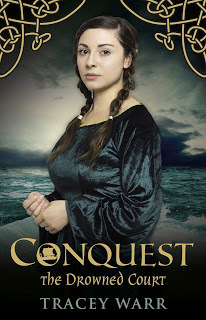 The Normans conquered England in one day but it took them over two hundred years to conquer Wales. Nest ferch Rhys is the daughter of the last Welsh ruler of the kingdom of Deheubarth in south west Wales. When her father and most of her brothers are murdered by invading Normans, she becomes a pawn in the sexual politics at the court of King Henry I. She is, first, the mistress of the king, and then married to the Norman steward of the lands that had once belonged to her father. In the neighbouring kingdom, a Welsh prince is plotting to kidnap her. The struggle between the Welsh and the Normans in the early 12thcentury is told through the eyes of Nest. In Fontevraud Abbey in Normandy, the Flemish nun Benedicta finds herself recruited to King Henry’s network of spies and plays a part in the King’s efforts to keep control of his vast realm. The Drowned Court is the second book in the Conquest trilogy. Praise for Daughter of the Last King, the first book in the trilogy:‘I could not put this book down from the moment I started it. I practically inhaled the content.’ Poppy Coburn
The Normans conquered England in one day but it took them over two hundred years to conquer Wales. Nest ferch Rhys is the daughter of the last Welsh ruler of the kingdom of Deheubarth in south west Wales. When her father and most of her brothers are murdered by invading Normans, she becomes a pawn in the sexual politics at the court of King Henry I. She is, first, the mistress of the king, and then married to the Norman steward of the lands that had once belonged to her father. In the neighbouring kingdom, a Welsh prince is plotting to kidnap her. The struggle between the Welsh and the Normans in the early 12thcentury is told through the eyes of Nest. In Fontevraud Abbey in Normandy, the Flemish nun Benedicta finds herself recruited to King Henry’s network of spies and plays a part in the King’s efforts to keep control of his vast realm. The Drowned Court is the second book in the Conquest trilogy. Praise for Daughter of the Last King, the first book in the trilogy:‘I could not put this book down from the moment I started it. I practically inhaled the content.’ Poppy Coburn‘A wonderful novel brilliantly researched and told in a fantastic page turning style... it will appeal to fans of Carol McGrath, Joanna Courtney and Patricia Bracewell.’ Lisa Reads Books ‘Brings forgotten, historical characters to life with such vivacity... [with] impeccably well researched history and well-conjured settings, Conquest makes for one engrossing historical read... [in] a similar writing style to Diana Gabaldon.’ Cosy Reads‘As the drawbridge came down and I ventured in, I was not disappointed. In fact I remember nothing of what happened in my everyday life until I came out at the end…. a brilliantly woven tapestry of historical intrigue where I felt as if I’d been part of Nest’s life and I missed her for a while afterwards.’ The Book TrailAmazon US Amazon UK
Published on April 10, 2018 23:00
April 9, 2018
Life in the Time of Marie Antoinette by Meghan Masterson #History #France #MarieAntoinette @MeghanMasterson
Life in the Time of Marie Antoinette by Meghan MastersonA day in the life of Marie Antoinette probably sounds very glamorous – at least pre-revolution. While it’s true that she lived in the opulent surroundings of Versailles, wore jewels and luxurious gowns, and had people to wait on her hand and foot, there were also a lot of rules. A lot of rules, and the number of servants and attendants also meant very little privacy.
Much of what we know about the queen’s daily routine comes from the memoirs of Henriette Campan, who was the first femme de chambre – chief of the queen’s ladies’ in waiting – whose intimate acquaintance with the rules and routines comes from being present for almost all of them. She was part of the queen’s household for twenty-three years, from 1770 until the queen’s execution in 1793.
 Marie Antoinette with a Rose, painted by Vigée Le Brun, 1783Marie Antoinette usually woke around eight in the morning, and had breakfast at nine. She often ate in bed, or at a table placed opposite a couch in her bedchamber. Breakfast was very light – coffee or hot chocolate (infused with orange blossom), perhaps a biscuit. When she wanted a bath, it would be rolled into her room at Versailles. (If she was staying at the estate of St. Cloud, she went to a separate bathing chamber below her apartments). Marie Antoinette’s perfumer provided aromatic sachets filled with blanched sweet almonds and bran for exfoliation, a luxury that might rival an exclusive spa treatment nowadays. The queen wore a long shift, kind of like a nightgown, of muslin in the bath, that buttoned all the way from her throat to her wrists. It’s a strange idea, to think of bathing while wearing clothes, but this is because, as luxurious as her bath sounds, the room was generally full of attendants and ladies-in-waiting. The queen had very little privacy, though when she rose from the bath, one of her attendants would hold up a sheet to shield her from view from the rest of the room.After bathing, the queen would often climb back into bed, where Madame Campan would bring her a book that contained fabric swatches of the patterns of all the gowns available for her to wear. Marie Antoinette would stick pins in the fabric samples of the garments she wanted to wear for the day. She typically made three wardrobe changes in a day, so would select one gown for morning, another for afternoon, and a fancy evening dress.
Marie Antoinette with a Rose, painted by Vigée Le Brun, 1783Marie Antoinette usually woke around eight in the morning, and had breakfast at nine. She often ate in bed, or at a table placed opposite a couch in her bedchamber. Breakfast was very light – coffee or hot chocolate (infused with orange blossom), perhaps a biscuit. When she wanted a bath, it would be rolled into her room at Versailles. (If she was staying at the estate of St. Cloud, she went to a separate bathing chamber below her apartments). Marie Antoinette’s perfumer provided aromatic sachets filled with blanched sweet almonds and bran for exfoliation, a luxury that might rival an exclusive spa treatment nowadays. The queen wore a long shift, kind of like a nightgown, of muslin in the bath, that buttoned all the way from her throat to her wrists. It’s a strange idea, to think of bathing while wearing clothes, but this is because, as luxurious as her bath sounds, the room was generally full of attendants and ladies-in-waiting. The queen had very little privacy, though when she rose from the bath, one of her attendants would hold up a sheet to shield her from view from the rest of the room.After bathing, the queen would often climb back into bed, where Madame Campan would bring her a book that contained fabric swatches of the patterns of all the gowns available for her to wear. Marie Antoinette would stick pins in the fabric samples of the garments she wanted to wear for the day. She typically made three wardrobe changes in a day, so would select one gown for morning, another for afternoon, and a fancy evening dress.
 Bust of Marie Antoinette.
Bust of Marie Antoinette.The ladies in waiting were entitled to remain in the room while the queen got dressed, a custom that again highlights the lack of privacy. Marie Antoinette abolished this formality when she became queen, allowing them to stay while her hair was styled, and then she would retire to the closet to dress – still not alone, since her own wardrobe women would accompany her, and Rose Bertin, her favourite dressmaker, would often be waiting inside the closet, which was actually quite a large separate room. The queen’s preference for Madame Bertin’s creations is one of the reasons she was able to alter the formality of dressing; the dressmaker was not a noblewoman, and therefore not entitled to be in the queen’s chambers with the other royal ladies. Since Marie Antoinette wasn’t willing to give up her gowns, she changed the routine. After she became queen, Marie Antoinette made many similar changes, though. She gradually implemented simpler customs. One such change included the rules for dining. It was customary that the queen would dine in public. Madame Campan describes that ‘the ushers suffered all decently dressed people to enter; the sight was the delight of persons from the country”, meaning that people would actually make trips to Versailles just to watch the queen eat a meal. Marie Antoinette followed this custom as dauphine, as well as one that dictated that the Queen of France should appear in public surrounded by women, and could only be served by women at mealtimes, but she changed the rule once she came to the throne. This probably made it easier for her to move around the palace, as well, since these updates made it so she could be accompanied by only a single valet and two footmen, instead of two ladies in full court dress.
 As you can see from this silk and cotton robe á la française from about 1770, a group of ladies with such full skirts wouldn’t be going anywhere fast, even in the vast hallways of Versailles.
As you can see from this silk and cotton robe á la française from about 1770, a group of ladies with such full skirts wouldn’t be going anywhere fast, even in the vast hallways of Versailles.Even with these changes, Marie Antoinette could go nowhere alone. When she went to Mass, she’d be surrounded by noble ladies, tirewomen, chevaliers, equerries, and various other attendants. Presentations of colonels could be made to her at this time, further slowing down progress. Different presentations occurred regularly on scheduled days; ambassadors would be introduced to her on Tuesday mornings, ladies presented on Sunday evenings before card-playing. It’s little wonder she so enjoyed the refuge of Petit Trianon, the more rustic little hamlet built within the grounds of Versailles, where she often retreated with friends and tried to live more simply.
 Hameau de la Reine, Marie Antoinette’s retreat at Petit Trianon
Hameau de la Reine, Marie Antoinette’s retreat at Petit TrianonOne might think that a preference for simple routines would have endeared her to the people, perhaps showing she wasn’t spoiled, but these changes were often more damaging than helpful to Marie Antoientte’s reputation. It was seen that she favoured the customs of her Austrian homeland, rather than French ones, showing that she was an outsider. Marie Antoinette often faced blame for things beyond her control, even having her reputation damaged by a theft of a diamond necklace, where the thieves used her name without any knowledge or involvement by the queen. (For those curious about the scandal, I’ve written a free short story around the diamond necklace affair, which you can read here). The luxury of Marie Antoinette’s daily routine came at a cost of many tedious customs and routines, most of them dictated by hierarchy, and an almost complete lack of privacy. I don’t think it was worth it, to be honest. Better to be upper-middle class in eighteenth century France than nobility, perhaps! Although I like the idea of having a book of clothing options and making daily selections. I bet there’s an app for that.
Meghan Masterson
 Meghan Masterson graduated from the University of Calgary with an Honours Bachelor of Arts in Communications Studies, and has worked several unrelated jobs while writing on the side. As a child, she gave her parents a flowery story about horses every year for Christmas. Thankfully, she has expanded her work past tales of equine perfection and thinly veiled Nancy Drew retellings, and is now mainly interested in writing historical fiction. She is drawn to strong historical figures and unique situations in history, which present unexpected opportunities and dilemmas for her characters. Meghan’s other interests include reading at all hours (even at breakfast), cooking, and going for walks with her dog. She and her husband live in Calgary, Alberta. Stay up to date on her book news through social media: Author Website | Facebook | Twitter | Instagram
Meghan Masterson graduated from the University of Calgary with an Honours Bachelor of Arts in Communications Studies, and has worked several unrelated jobs while writing on the side. As a child, she gave her parents a flowery story about horses every year for Christmas. Thankfully, she has expanded her work past tales of equine perfection and thinly veiled Nancy Drew retellings, and is now mainly interested in writing historical fiction. She is drawn to strong historical figures and unique situations in history, which present unexpected opportunities and dilemmas for her characters. Meghan’s other interests include reading at all hours (even at breakfast), cooking, and going for walks with her dog. She and her husband live in Calgary, Alberta. Stay up to date on her book news through social media: Author Website | Facebook | Twitter | InstagramThe Wardrobe Mistress
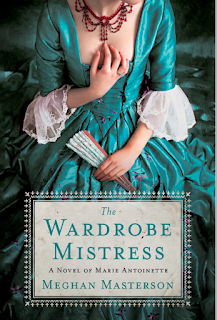 THE WARDROBE MISTRESS is Meghan Masterson’s fascinating and visceral debut, an inside look at Marie Antoinette’s luxurious life in Versailles remarkably juxtaposed against life in third estate as the French Revolution gains strength. A propulsive exploration of love, loyalty, danger, and intrigue…not to be missed.It’s Giselle Aubry’s first time at court in Versailles. At sixteen, she is one of Marie Antoinette’s newest undertirewomen, and in awe of the glamorous queen and her opulent palace life. A budding designer, it’s a dream come true to work with the beautiful fabrics and jewels in the queen’s wardrobe. But every few weeks she returns home to visit her family in the Parisian countryside where rumors of revolution are growing stronger.From her position working in the royal household, Giselle is poised to see both sides of the revolutionary tensions erupting throughout Paris. When her uncle, a retired member of the secret du roi, a spy ring that worked for the old King, Louis XV, suggests that she casually report the Queen’s actions back to him as a game, she leaps at the chance. Spying seems like an adventure and an exciting way to privately support the revolution taking the countryside by storm. She also enjoys using her insight from Versailles in lively debates with Léon Gauvain, the handsome and idealistic revolutionary who courts her.But as the revolution continues to gain momentum, and Giselle grows closer to the Queen, becoming one of the few trusted servants, she finds herself dangerously torn. Violence is escalating; she must choose where her loyalty truly lies, or risk losing everything…maybe even her head. Available at:
THE WARDROBE MISTRESS is Meghan Masterson’s fascinating and visceral debut, an inside look at Marie Antoinette’s luxurious life in Versailles remarkably juxtaposed against life in third estate as the French Revolution gains strength. A propulsive exploration of love, loyalty, danger, and intrigue…not to be missed.It’s Giselle Aubry’s first time at court in Versailles. At sixteen, she is one of Marie Antoinette’s newest undertirewomen, and in awe of the glamorous queen and her opulent palace life. A budding designer, it’s a dream come true to work with the beautiful fabrics and jewels in the queen’s wardrobe. But every few weeks she returns home to visit her family in the Parisian countryside where rumors of revolution are growing stronger.From her position working in the royal household, Giselle is poised to see both sides of the revolutionary tensions erupting throughout Paris. When her uncle, a retired member of the secret du roi, a spy ring that worked for the old King, Louis XV, suggests that she casually report the Queen’s actions back to him as a game, she leaps at the chance. Spying seems like an adventure and an exciting way to privately support the revolution taking the countryside by storm. She also enjoys using her insight from Versailles in lively debates with Léon Gauvain, the handsome and idealistic revolutionary who courts her.But as the revolution continues to gain momentum, and Giselle grows closer to the Queen, becoming one of the few trusted servants, she finds herself dangerously torn. Violence is escalating; she must choose where her loyalty truly lies, or risk losing everything…maybe even her head. Available at:Amazon | B&N | IndieBound | BAM | Macmillan | Kobo | Chapters/Indigo | iBooks
Published on April 09, 2018 23:00
April 8, 2018
Author’s Inspiration ~ Anneliese Dalaba #HistoricalFiction @adalaba2017
Please give a warm welcome to historical fiction author, Anneliese Dalaba.
Author’s Inspiration

George Eliot said, "It's never too late to start what you might have been." I've taken her advice and have started a new phase of my life -- writing. Not just any writing. I've done that. I've written hundreds of letters, kept journals, written articles for newsletters, and so on. But what I haven't done is written the one thing that really interests me. A romance that helps to inspire, give hope, and hopefully even cause the reader to chuckle a bit. I've decided it's time to finally begin.
Since I’m over 50, it would be easy to make excuses. I'm certainly not young anymore, so why start now? I don't understand all the modern technologies, programs, and apps. What if people don’t like what I wrote? How will I feel when I'm criticized? There are numerous excuses I could make, but what I can't get away from is this. How will I feel at the end of my life if I haven't pursued this dream?
If I live to be my parents' age, I may still have 30 or more years of life ahead of me. What will I do with those years? My nest is empty. I have more time on my hands, so perhaps it's time to start checking off items on my bucket list. One of the top items on that list is writing a Christian historical romance. And guess what? I did it! I published my first novel, Reluctant To Wed, at the end of June, 2017. My readers keep asking me when my next book will be published? They have become the wind beneath my wings and I’ve almost completed the first draft of the next book in the Arrange Marriage Series.
I have to admit that I have one regret about my book-writing journey, and that is that I wish I’d started sooner. Imagine how many books I might have published by now. On the other hand, the many years prior to turning 50 were certainly not wasted. I gained years of life experience and very possibly read thousands of books, mostly historical romance. Both the experience and the books have prepared me and have become a great resource for this novel-writing adventure I’m on. So perhaps I have nothing to regret after all. Maybe this is the perfect time for me to begin. I may never know for sure whether I should have started before 50 or after, yet one thing is certain, I will never have to regret not having started at all.
My favorite genre is historical romance. I’ve read pioneer, colonial, western, and regency England novels, as well as other time periods. I love looking back in time and seeing how people lived back then, the problems they face, the things that made them successful, and so much more. When I began writing my first book, I chose England in the early 1800s as my setting. I cannot tell you why I chose that setting. It just felt right. Since I have read countless books in that time period, I was quite familiar with the way of life back then. There was still a lot of research that needed to be done, but the hours and hours of reading over the years definitely helped.
Is there something you have longed to do? Have you given up on your dream? Hopefully this post will inspire you and you will sense courage rise up in your heart. Begin dreaming again. But this time, make that dream come true.
Anneliese Dalaba
 Anneliese Dalaba lives in Michigan with her husband of 30 years. She has been in full-time ministry beside her husband all of those years. He is the hero of her personal love story and her greatest encourager. She is a member of ACFW and ACFW Great Lakes Chapter. For many years, she worked as an administrative assistant and medical transcriptionist. After raising their two children, she is now experiencing the wonderful phase of grandparenting. She is an avid reader, and now an author of a Christian historical romance. Anneliese loves to hear from readers, you can find her: Website Facebook #Twitter Amazon Author Page
Anneliese Dalaba lives in Michigan with her husband of 30 years. She has been in full-time ministry beside her husband all of those years. He is the hero of her personal love story and her greatest encourager. She is a member of ACFW and ACFW Great Lakes Chapter. For many years, she worked as an administrative assistant and medical transcriptionist. After raising their two children, she is now experiencing the wonderful phase of grandparenting. She is an avid reader, and now an author of a Christian historical romance. Anneliese loves to hear from readers, you can find her: Website Facebook #Twitter Amazon Author PageReluctant To Wed
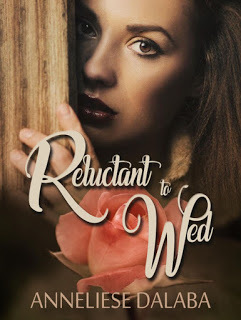 To keep her parents from losing their farm in Pennsylvania, Emma agrees to travel to England and accept her grandfather's offer to arrange a marriage for her with the Earl of Devonport. She secretly hopes a marriage to this stranger will lead to love.
To keep her parents from losing their farm in Pennsylvania, Emma agrees to travel to England and accept her grandfather's offer to arrange a marriage for her with the Earl of Devonport. She secretly hopes a marriage to this stranger will lead to love. To honor his father, Devon reluctantly agrees to marry Emma, but determines to keep her at arm's length. A marriage of convenience is satisfactory to the earl who wants no emotional ties. He needs an heir, but he refuses to bow to the whims and demands of a wife. He would prefer simply to provide a home and a generous allowance for her, but continue to enjoy his freedom.
Emma’s straightforward and unpretentious manner draws Devon’s admiration. Unfortunately, long-held fears are not easily overcome. Emma finds herself falling in love with him, but she’s afraid of being in love alone. Can a mutual love develop and grow in this arranged marriage? When all hope seems lost, Emma must learn to trust God even if it means letting go of her dreams.
Published on April 08, 2018 23:00
April 6, 2018
#BookReview ~ COUNTERPOINT: Theo, Earl of Suffolk: The Lydiard Chronicles 1603-1630 by Elizabeth St. John #HistoricalFiction @ElizStJohn
COUNTERPOINT: Theo, Earl of Suffolk: The Lydiard Chronicles 1603-1630
By Elizabeth St. John
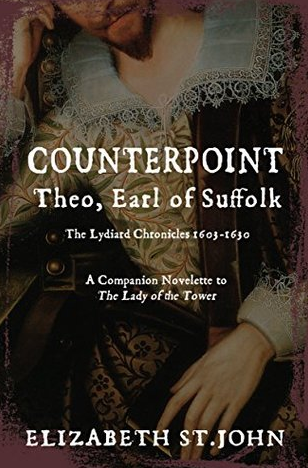
Theo Howard, Earl of Suffolk is torn. Betrothed to a child to satisfy his family dynasty, he longs for the freedom to make his own choice. And when he attends a lavish party at his family's newly-restored palace, he is immediately attracted to Lucy, a beautiful young lavender-seller. But in this enchanted world of Shakespeare's Midsummer's Night Dream, all is not as it appears. Theo's headstrong sister Frances is determined to sabotage her own arranged marriage, and aided by the cunning of Frances and her friend Barbara St.John, perhaps Theo can find his own path to happiness and true love.
The Coffee Pot Book Club Review

“Love looks not with the eyes, but with the mind,
And therefore is winged Cupid painted blind.”
A Midsummer Nights Dream By William Shakespeare
Duty. A word Theo Howard, Earl of Suffolk, understands all too well. It is a good match. It is good for the family. But Theo is less than enthusiastic about being betrothed to a child that is only six years of age.
As he tries not to dwell too much on his future, he meets a young lady whose innocent is alluring, but whose quick wit hints at an intelligent mind. He cannot help but fall for her. If only....
COUNTERPOINT: Theo, Earl of Suffolk: The Lydiard Chronicles 1603-1630 by Elizabeth St. John is a short and sweet story that swept me away to another time.
With elegant prose and characters that will linger in the memory, this is a story not to be missed!
Amazon US Amazon UK
Elizabeth St. John
 Elizabeth St.John was brought up in England and lives in California. To inform her writing, she has tracked down family papers and residences from Nottingham Castle, Lydiard Park, and Castle Fonmon to the Tower of London. Although the family sold a few castles and country homes along the way (it's hard to keep a good castle going these days), Elizabeth's family still occupy them - in the form of portraits, memoirs, and gardens that carry their imprint. And the occasional ghost. But that's a different story...
Elizabeth St.John was brought up in England and lives in California. To inform her writing, she has tracked down family papers and residences from Nottingham Castle, Lydiard Park, and Castle Fonmon to the Tower of London. Although the family sold a few castles and country homes along the way (it's hard to keep a good castle going these days), Elizabeth's family still occupy them - in the form of portraits, memoirs, and gardens that carry their imprint. And the occasional ghost. But that's a different story...Elizabeth loves to hear from readers, you can find her... Website Facebook Twitter
Published on April 06, 2018 09:18
April 5, 2018
Author’s Inspiration ~ Patti Sherry-Crews #Western #Romance #amwriting @PattiSherryCrew
Please give a warm welcome to Western Romance author, Patti Sherry-Crews.
Author’s Inspiration
Sometimes as a writer, I have to pull characters and plot lines out of thin air to craft a story. Other times, I’m able to share stories that have lived in my head for years. Such was the case with my first historical western, Margarita and the Hired Gun.But where did the seeds that took root to become this novel come from? Reading classic quest or journey tales like the Odyssey and watching old movies with my grandma, that's where.
There’s something about setting a character off on a journey, ending in self-discovery which piques my interest. I love to watch a character being tested and meeting challenges to come out at the end of the trail a stronger person.
Now, put two mismatched strangers together on that journey and you’ve got a romance of epic proportions.
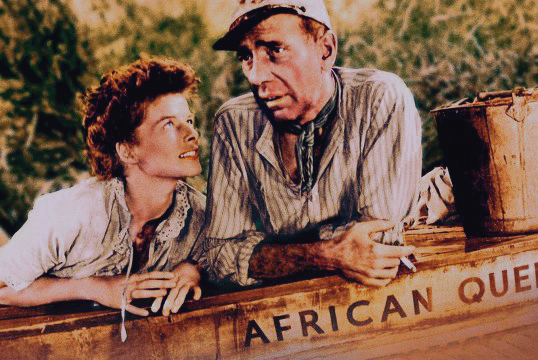
The African Queen
So, it with a nod to all the great journey tales and odd-ball couple movies, I set Margarita and Michael (AKA Rafferty) off on a journey.
Margarita McIntosh is a westerner by birth, but after her mother dies she’s sent to boarding schools out east. In her sheltered life, she’s never had to fend for herself. But, there's a change in her fortunes, and the pampered princess finds herself traveling for weeks on horseback, sleeping on the ground, battling the elements, and facing danger all alongside a big, scary Irishman.
While Margarita’s transformation is about finding her inner strength under trying circumstances, Michael’s journey is more of a spiritual one. Forced to flee Ireland, he has spent in years in America doing just about every bad thing a man can do in order to survive. He entertains Margarita around the campfire with his stories of time spent in a tenement in New York, his escape as a sharpshooter in the Civil War, and riding with an outlaw gang.
(When Michael is wounded, the pair have to hole up at an outlaw hideout for a few days, posing as husband and wife. He meets up with some old acquaintances while there. This part of their adventure inspired by my fondness for the Hole in the Wall hideout scene in the movie Butch Cassidy and the Sundance Kid.)
Butch and Sundance’s cabin


Every step forward on their journey together, Michael begins to shed his outer layers. As he starts to see himself fresh through the naive young woman's eyes, he remembers the man he once was and can possibly be again. He tells her his real name and every time she uses it (which she frequently does), it’s like a wakeup call to his soul. Margarita is his conscience personified.
One of the most poignant moments in the book (in my opinion) is just as the two have had their first flirty moment, they are attacked. Although Michael saves her, the act of violence repulses Margarita. Michael is pulled right back to Rafferty.
Excerpt:
He raised his hand and stroked her cheek with the back of his fingers. Margarita recoiled. He reacted like she’d slapped him. “I saved your life!” “I know, I know. I’m grateful.” The image came back to her. Michael standing over that wounded man, his eyes so dark they looked like cold, black stones, ready to cave the man’s head in with his boot. “This is what I do. You knew that.” “Knowing and seeing are two different things.” He sat back, looking away from her. “Ah, that’s it.” “In getting to know Michael Byrne, I forgot about Rafferty.” He looked back at her with a pained expression, but then his eyes hardened with anger. She sat back further away from him. “Margarita, those two men are not like any men I hazard you’ve ever met before. I know the kinds of things they’ve done. Do you know what they would’ve done to you before they killed you?” He pulled a gun out of his pocket and held it sideways in front of her face. “This is the gun I took off Brady. Do you see the notches in the handle? Each notch represents a person he killed.” “I imagine you’ve killed more.” “Maybe, but he was proud of the people he killed. So proud, he struck a line in the handle of his gun for each kill. I am never proud of killing a man. Every man I dispatch is one more notch in my soul. I don’t need to put notches in my gun.” He stuck the gun back in his pocket. His face contorted with anger. “Listen, I have killed men. Lots of them, and killing is killing. I’m not excusing the things I’ve done. But I vowed when I deserted from the army I would never shoot another innocent man. I’ve had to pull the trigger on men who were ready to do the same to me, and I’ve been hired to take out men who were acting out of the reach of the law. Murderers and outlaws. I may be fooling myself, but I think the world is better off without those men.” He stood up and began pacing, different emotions warring over his face. Then, he turned to her and pointed his finger at her. “And don’t you look down your nose at me. How do you think your father paid for your fancy clothes and schools?” “You said my father didn’t kill innocent people.” “He didn’t have to, because he hired me to persuade them to see things his way. I didn’t have to kill any of them.” He stood up then, raking his hand through his hair, putting his emotions back into order. “Come on, let’s find their horses. You’d like your own mount again, wouldn’t you?” He held out a hand to her, but she couldn’t make herself put her hand in his. He made a clucking sound and turned away from her. Margarita hurried to walk behind him. Whatever else he was, he was her protection, and she now knew there were things to be afraid of.
 Amazon
AmazonAnd, now, Margarita and Michael hit the trail again along with five other full length novels in Under a Western Sky! And what great company to be in along with Prairie Rose Publications authors Cheryl Pierson, Kaye Spencer, Tracey Garrrett, Agnes Alexander, and Celia Yeary.
Where do the very best love stories blossom? UNDER A WESTERN SKY, of course! This fabulous boxed set of six tales of danger and romance are sure to capture your imagination as you are carried away to the old west. Handsome marshals, Texas Rangers, gunslingers, and wealthy landowners meet their matches with the daring women they happen to fall in love with, and you won’t want to put this boxed set down until you’ve read the very last story!
Patti Sherry-Crews
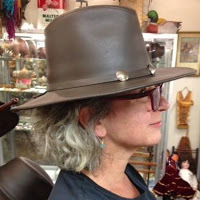 Patti Sherry-Crews lives in Evanston, Illinois with her husband and two children. She went to Grinnell College and spent her junior year at the University of North Wales, UK. Sometimes she likes to play with cowboys and Indians, other times with knights in shining armor, and then there are times she stays in her own century. Patti loves to hear from readers, you can find her: Website Amazon Twitter
Patti Sherry-Crews lives in Evanston, Illinois with her husband and two children. She went to Grinnell College and spent her junior year at the University of North Wales, UK. Sometimes she likes to play with cowboys and Indians, other times with knights in shining armor, and then there are times she stays in her own century. Patti loves to hear from readers, you can find her: Website Amazon TwitterMargarita And The Hired Gun
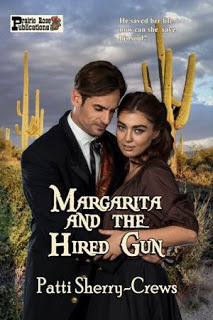 Pampered Margarita McIntosh is not used to being forced to do things she doesn’t want to do—but when her father, Jock, sends her away for her own safety, she has no choice. The long journey from Flagstaff to Durango tests her personal strength of will as never before, and the secret she carries in her saddlebag could be the death of her.
Pampered Margarita McIntosh is not used to being forced to do things she doesn’t want to do—but when her father, Jock, sends her away for her own safety, she has no choice. The long journey from Flagstaff to Durango tests her personal strength of will as never before, and the secret she carries in her saddlebag could be the death of her. A rough Irish gunman, known to her only as “Rafferty”, is entrusted with getting her to her destination “safe and intact”—something he fully intends to do to claim the reward he’s been promised by Jock McIntosh. With a price on his head, the promised money is Rafferty’s ticket to a new life, and he’s not going to jeopardize that for anything—not even love.
But there are steamy nights and dangers all along the arduous trail for MARGARITA AND THE HIRED GUN, with deadly secrets between them that passion cannot erase. With her father’s enemies after her and the secret she conceals, will Rafferty’s protection be enough to save their lives? And will the heat of their passionate love be enough to seal their future together—if they do survive?Amazon
p.p1 {margin: 0.0px 0.0px 0.0px 0.0px; font: 12.0px Helvetica; -webkit-text-stroke: #000000} span.s1 {font-kerning: none} p.p1 {margin: 0.0px 0.0px 0.0px 0.0px; font: 12.0px Helvetica; -webkit-text-stroke: #000000} span.s1 {font-kerning: none}
Published on April 05, 2018 23:00
April 4, 2018
The Tale Of Taliesin by Christopher Lee #Myths #Folklore @ChristLeeEich
The Tale Of Taliesin By Christopher Lee

As I wrap up the grueling task of formatting and final revisions on my latest book, Bard Song, I find myself in conversation with a familiar friend, the Shining Brow of Taliesin. When asked by Mary-Anne Yarde to produce a guest post for her blog about Myths, Legends and Folklore I had no problem in discovering a suitable topic. The reconstructionist and neopagan movements have illuminated vast corners of history and mythology that were once shrouded in mystery. Taliesin and the bards of Brythonic, Irish, and Scottish lore are just a few of the mythological remnants that have survived the dark ages. The bards, sometimes called fili, were poets, keepers of history and myth, musicians, shapeshifters, and sometimes fools. Folklore remembers some of them as druids, like the fabled Merlin. In fact, there appears to be some crossover between the two famous bards.
Perhaps the most famous tale of bardic lore belongs to Taliesin. The account of his transformation from Gwion Bach a young boy in the service of the goddess Cerridwen. As is true in many of the old tales, the main character may have possibly been more than one man. Historians attribute the name to potentially two welsh poets in both the sixth and ninth centuries. Historically the bards were poets who regaled the courts of Kings with tales of great heroes and battles. Yet as time inflated the myths of these poets, they became much more than royal wordsmiths. Like the heroes they enshrined in myth, the bards themselves became mythic beings.
 Cerridwen by Christopher Williams (1910)
Cerridwen by Christopher Williams (1910)Taliesin himself may have had a hand in creating the myth that has been passed down through the generations. As the tale recounts, Taliesin was a boy in the service of the crone goddess Cerridwen. His singular task was to tend a potion brewing within her hallowed cauldron. The potion he kept watch over was meant for her son, an ugly and foolish creature. The goddess wished to bestow infinite wisdom upon her son and set to brewing the potion for a year and a day. Gwion the boy was to stir the potion each day. For months he did so until one day a bursting bubble cast three drops of the potion upon his thumb. Instinctively Gwion placed his burnt thumb in his mouth. In doing so he absorbed the infinite wisdom of the brew. In seeing all, he realized that the wrath of the goddess would soon be upon him and so he fled.
Upon her return, Cerridwen took to pursuing the boy who with his new found knowledge transformed himself into a hare. The goddess then took pursuit as a greyhound. As soon as she neared him, he transformed into fish and tossed himself into the river. She saw this and pursued him as an otter. Again and again he transformed to escape her before finally transforming into a grain of wheat. The chase completed the goddess, now a hen consumed the boy, and in her belly he rested. For nine months she carried him in her womb with the intent to kill the boy upon his rebirth. However, once she bore him, his beauty astounded her so that she was moved to spare his life.

It was then that she wrapped him in a leather bag and cast him to the ocean, at the mercy of nature. He was found by the servants of Elphin and upon being seen was given the name of Taliesin, the shining brow. In this court the legendary Taliesin was a mythic being in capable of succumbing to death. or the traps of time.

Today Taliesin remains with us through the poetic works passed down generation after generation by the bards who followed him. As an author I am drawn to their words, their inspirations, and their mastery of storytelling. Tales such as Taliesin’s and other poets, writers, and wordsmiths of bygone days should be preserved not only in their original forms, but also in approachable, modern translations. The folklore of my ancestry is steeped in bardic tradition and as such I make it a point to carry them in my writing whether by poetry or by including the bards in my fiction. Their stories are stories that belong to the entire world, and as long as I draw breath they will never be forgotten.
Christopher Lee
 Christopher Lee is the author of the Hallowed Veil Series, an epic fantasy series that spans the breadth of human history. Christopher is an avid history buff, mythologist, bardic poet, and keeper of the old ways. Though Nemeton is his first published release, Christopher is hard at work bringing the subsequent chapters of the Hallowed Veil Series to life.
Christopher Lee is the author of the Hallowed Veil Series, an epic fantasy series that spans the breadth of human history. Christopher is an avid history buff, mythologist, bardic poet, and keeper of the old ways. Though Nemeton is his first published release, Christopher is hard at work bringing the subsequent chapters of the Hallowed Veil Series to life.Christopher loves to hear from readers, you an find him: Website Facebook Instagram Twitter
Nemeton: The Trial of Calas (Hallowed Veil)
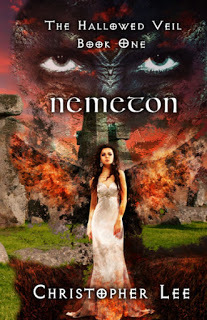 For millennia the Nemeta have kept the fragile truce in the antediluvian world. A peace built on an ancestral curse upon mankind's primal link to magic. After six thousand years, Man has tired of enduring subjugation. Kings and peasants clamor. Thrones tremble at whispers of war between the primeval foes of Man and the Fae.
For millennia the Nemeta have kept the fragile truce in the antediluvian world. A peace built on an ancestral curse upon mankind's primal link to magic. After six thousand years, Man has tired of enduring subjugation. Kings and peasants clamor. Thrones tremble at whispers of war between the primeval foes of Man and the Fae. Amidst her studies of mythical artifacts, a young Seræphym uncovers designs to reverse the hex. A scheme that implicates her own people as heretics. Faced with the apocalyptic consequences of magical war, Samsara must choose between her freedom or that of her people.
Even if it means eternal service to the order that threatens to exterminate her kind.
Amazon US Amazon UK
Published on April 04, 2018 23:00
April 3, 2018
Author’s Inspiration ~ J. Rutledge #fantasy #paranormal @writerJRutledge
Please give a warm welcome to fantasy author, J. Rutledge.
Author’s Inspiration
To be honest, I did not want to write a story that dealt with religion. Religion is not one of my favorite topics, however it was the only story at the time, that had potential to move forward.
 The original idea came about during a brief conversation, when the other person said to me, “all snakes are evil because of the Serpent in the Garden of Eden.” I said… “All snakes? rattlesnakes, pythons, boa constrictors… they’re just evil?” Now, I know the Garden of Eden story and I was pretty sure it didn’t say that. The person I was speaking to was very religious, and there was no way to argue rationally against that, so I left it alone. Unfortunately, it was stuck in my head. So, when I got home, I reread the garden of Eden story just to make sure, and I confirmed that nowhere in the text does it ever say Evil, Satan, or Devil.
The original idea came about during a brief conversation, when the other person said to me, “all snakes are evil because of the Serpent in the Garden of Eden.” I said… “All snakes? rattlesnakes, pythons, boa constrictors… they’re just evil?” Now, I know the Garden of Eden story and I was pretty sure it didn’t say that. The person I was speaking to was very religious, and there was no way to argue rationally against that, so I left it alone. Unfortunately, it was stuck in my head. So, when I got home, I reread the garden of Eden story just to make sure, and I confirmed that nowhere in the text does it ever say Evil, Satan, or Devil. A Law & Order type scene popped in my head, where the Serpent was on trial and the prosecution was trying to prove motive and intent. That’s when it struck me to rewrite it from the Serpent’s point of view, to see if it would make more sense. What if you somehow encountered this legendary dark figure, and it speaks intelligently and tells you its version of the events. The same events would happen but now the perspective has been changed. It sounded interesting to me, and it was something I had never heard before with this subject. The original story was only a page and a half, and after 2 years of writing it was at 800 pages, another year of editing cut it down to just under 500 pages.
Truth and the Serpent is meant as a discussion piece. It’s an absurdity about a talking animal set in the ‘WHAT IF UNIVERSE.’ It’s not an attack on religion, it’s a conversation free from judgment, or fear of reprisal. The Serpent character can ask these questions and pose alternative theories without the reader feeling threatened. Because the reader has no connection to the Serpent character. The same could not have been done with say Noah or Joseph, because our minds just won’t allow it.
You don’t take on a subject like religion or politics and expect everyone to agree with you. Truth and the Serpent is meant as a discussion piece. There really is no 100% right answer with this subject. And as such, I think the best you can hope for is to add something new to the conversation.
As a writer, it was a personal challenge to see if I could FIND SOMETHING DIFFERENT, without it becoming an attack on the subject. How many times have we heard these stories and every time it’s the same old thing. If you even mention religion, Jew, Muslim, Bible, people completely lose their minds.
Once I decided to write it, I wanted it to be for someone like myself. But how do you write a story that deals with religion, for a person who isn’t interested in debating religion? That’s when I decided that the balance of the story would be true versus untrue, instead of good versus evil or right versus wrong. As Good and Evil are subjective and change depending on the point of view. However, there are things in these stories that are universally true and relatable to everyone.
The themes of Truth and The Serpent are personal responsibility, and the seeking of truths over myth and lore. I worked very hard to find truths in these stories that unit; and not get caught up in the legends and fables that have come to control, enslave, and divide. As much as people debate the existence of God, or argue Jew versus Muslim against Christian, nothing ever seems to change or improve.
So, with this story I had a chance to question and critique as much as I wanted to. I understand that many readers will be apprehensive due to the subject, however if you don’t ask any new questions, you’re not going to get any different answers. Truth and The Serpent is not about debunking the Bible or explaining existence through science and math. Truth and the Serpent is a fiction that examines the shared stories of humanity through the eyes of the infamous Serpent.
It is my sincere hope that, after reading this book it spurs people to think something different, ask a new question, or go back and ‘READ IT FOR YOURSELF.’ If that happens, then as a writer, I did my job!
J. Rutledge Writing stories has always been a passion of mine that I rarely shared with others. As a child, I was often frustrated with the stories and characters I was presented with. I then began creating my own stories, and rewriting others with new endings or plot twists that I felt were lacking. As a learned man, I have always found myself asking more in depth questions, and seeking out different meanings than my peers. Over the years, I have come to embrace that obtuseness about myself, and now I let it drive me. It was that same sense of curiosity and need for a deeper meaning that led me to creating Truth and The Serpent, my first full length novel. My goal as a writer is to generate intriguing, positive, and challenging ideas, while leaving the reader with plenty to chew on in anticipation of the next story.Connect with J. Rutledge: Facebook Twitter
Truth and The Serpent
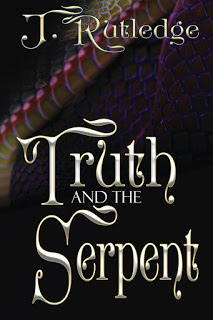 What if you encountered a dark and sinister character of not so subtle reputation? One whose origins are the very meaning of temptation and sin.
What if you encountered a dark and sinister character of not so subtle reputation? One whose origins are the very meaning of temptation and sin. What do we really know of creation, myth, and belief? There was a Man, a Woman, a Garden, and of course… a Serpent. Yet, what we have come to know as temptation, and mortal sin are only one side of the story. You see, three sinned, and three were punished, but only two were expelled from the Garden, but afterwards…what happened to the Serpent?
A present-day man finds himself eye to eye with the infamous Serpent of curse and ruin. The Serpent who characteristically makes the man an offer to learn not just what happened, but why.
A tale unlike any other, where the fall of man is not weighed on a scale of good or evil, but in truth and lies. The Serpent whose intellect, sarcasm, and wit cultivates over time as he appraises the history of man and religious lore. The Serpent who is also on a journey of self-discovery to learn the meaning of that ill-fated encounter and the purpose of his own life.
Come to know the unsung story of one who lived through creation, survived the great deluge, witnessed a mass exodus, and the rise and fall of exalted kings of men. Could such a tale, as told by a forked tongue, be the end of lies, and the beginning… of the truth.
Amazon US Amazon UK
Published on April 03, 2018 23:00
April 2, 2018
A Tour of Historic Weapons by Rebecca Tran #History #Swords @Rtranbooks
A Tour of Historic Weapons by Rebecca Tran
Writing any period piece comes with its own set of challenges. A paranormal historical novel adds a whole new twist. My novel starts in 1707 and covers 300 years which gave me plenty of opportunities to explore a favorite subject: weapons. I could spend hours looking at and reading about different armaments. When a conference was called in 1787 and vampires from all over the worldgathered in one location I had to find bladed weapons from every corner of the earth.Each vampire came from their own city in traditional dress armed with traditional weapons. The meeting point was in a large estate south of London. The vampires living here use European hand and a half broadswords that were the same style swords carried by medieval knights centuries before. Their French neighbors weren’t much more exciting. They used a short, thin rapier that was popular about 100 years before the meeting. The Musketeers carried the same type of sword while protecting the king.

Their Spanish cousins also carried rapiers. These rapiers were older versions of the French swords. The blades were wider and longer. The hilts lacked the large cage that gave rapiers their distinctive look. The Spanish rapiers were also a little flashier, but that has more to do with the individual vampire than the weapon itself.The Irish vampires carried long, broadswords similar to claymores. Although in a previous point in the book one of the Irish vampires carried two short swords. While carrying a single-handed sword would have been common for an Irish soldier dual wielding would not. They were also more likely to carry a long dagger than two swords as a second method of defense.

The Turkish vampires carried traditional curved swords called a kilij. This type of sword became the dominant form in Western Asia during the Seljuk Empire between 1037-1194 AD. The kijilspread with the Ottoman Empire and was influenced by similar forms of curved blades. The most distinctive change and improvement came in the late 18thcentury. The blade used to curve and flare out at the end by 30% making it useful as only a cutting weapon. In the late 18th century though, this changed. The blade was shortened, and a distinctive T in the back of the blade was added to cut down on weight while increasing blade strength. These improvements allowed the kijil to be used for both cutting and piercing making it more versatile.

Curved swords were also used by the vampires from Thailand, which in1787, was still Siam. Unfortunately, a lot of the actual records surrounding Thailand’s original fighting techniques and weapons were lost in the Burmese invasion in 1767. Many believe the martial arts form called Krabi-Krabong was developed for warriors fighting on the battlefield. The daab, or curved short swords, carried by the vampires in my novel are an integral part of this fighting style. Krabi-Krabong also uses the krabi (saber), krabong (staff), lo (shield), phlong (cudgel), ngaw (bladed staff), mai sok san (clubs worn on the forearms).

The Chinese vampires gave me a chance to add a little variety. Not only was their representative a female but she also carried a different weapon. The Qiang or spear is traditionally 9-21 feet long with a red horse hair tassel hanging from the leaf-shapedblade. The spear shaft itself has some give to it. In the hands of a skilled user the spear will wiggle and bounce, andit is said that it looks like a dragon is dancing around it. The tassel is meant to distract the opponent and keep blood from running down the length of the spear. Records show its use as early as 400 BC.

The last weapon unusual weapon was wielded by the vampires from Kazakhstan although in 1787 they were under Chinese rule. The Kazakh people are descendants of Turkic and medieval Mongol tribes that settled in the area between the Black Sea and Serbia before the 5th and 13th centuries. Their roots of other nomadic tribes including the Huns influenced their weaponry. The Kazakh’s believe in five types of weapons for military use: missile, bladed, thrusting, cutting, and strike weapons. I chose one of the missile weapons the ‘zhak’ or bow which is made of flexible wood or bone. To vampires who are used to swordplay,it gave the Kazakh vampires an advantage. While they could wield a sword as well, the Kazakhs had six different types, a bow and arrow is more fun.
Rebecca Tran
 Rebecca Tran is a hybrid author and blogger with three award-winning novels. She started writing when she was sixteen as self-prescribed therapy after her father passed away and hasn’t stopped since. Rebecca is also a pharmacist, wife, and mother to two rambunctious girls and a Boston Terrier. If she ever has free time she likes combing resale shops to add to her teapot collection or quilting. Currently, she lives in her home state of Missouri.Rebecca loves to hear from readers, you can find her: Website Blog FacebookInstagram Twitter
Rebecca Tran is a hybrid author and blogger with three award-winning novels. She started writing when she was sixteen as self-prescribed therapy after her father passed away and hasn’t stopped since. Rebecca is also a pharmacist, wife, and mother to two rambunctious girls and a Boston Terrier. If she ever has free time she likes combing resale shops to add to her teapot collection or quilting. Currently, she lives in her home state of Missouri.Rebecca loves to hear from readers, you can find her: Website Blog FacebookInstagram TwitterFor Their Sins
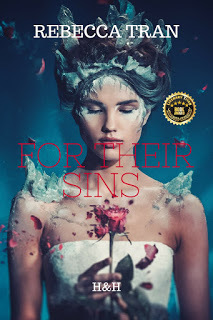 For Their Sins is a first-person narrative following the life of a very unconventional 300-year-old vampire. Alexandria Diego was Born in 1707 as a Venandi, a descendant of angels. Her people were charged by God to send the worst sinners to judgment. That included the soulless Mordere that are turned into vampires by more traditional means. Although Alexandria chose the path of the hunter, she always longed for a quiet life. Destiny had other plans. One simple choice irrevocably changed Alexandria's life, and soon all of her people knew her name. When war broke out between her people and the Mordere Alexandria suddenly became her people's last hope of survival. Alexandria is lost and confused under the sudden weight. After agonizing over the problem, she faces it head-on. But when her true love is captured by the enemy nothing will stand in her way of getting him back. The only question is: is it too late? Amazon B&N iBooks Kobo
For Their Sins is a first-person narrative following the life of a very unconventional 300-year-old vampire. Alexandria Diego was Born in 1707 as a Venandi, a descendant of angels. Her people were charged by God to send the worst sinners to judgment. That included the soulless Mordere that are turned into vampires by more traditional means. Although Alexandria chose the path of the hunter, she always longed for a quiet life. Destiny had other plans. One simple choice irrevocably changed Alexandria's life, and soon all of her people knew her name. When war broke out between her people and the Mordere Alexandria suddenly became her people's last hope of survival. Alexandria is lost and confused under the sudden weight. After agonizing over the problem, she faces it head-on. But when her true love is captured by the enemy nothing will stand in her way of getting him back. The only question is: is it too late? Amazon B&N iBooks Kobo
Published on April 02, 2018 23:00
April 1, 2018
Author’s Inspiration ~ Tom Williams #HistoricalFiction #HistFic @TomCW99
Please give a warm welcome to Historical Fiction author, Tom Williams.
Author’s Inspiration
 When Mary Anne Yard offered me the chance to write about the inspiration for Burke in the Land of Silver, I was a bit disconcerted. Traditionally, authors are inspired by something they stumble across and then write the book that they have to write because they are so moved by their experience. The origins of Burke in the Land of Silver are probably more typical, but much less romantic.
When Mary Anne Yard offered me the chance to write about the inspiration for Burke in the Land of Silver, I was a bit disconcerted. Traditionally, authors are inspired by something they stumble across and then write the book that they have to write because they are so moved by their experience. The origins of Burke in the Land of Silver are probably more typical, but much less romantic.The first book I wrote was The White Rajah and I was lucky enough to get an agent who was able to get it read by several major publishers. They generally seemed to think that it had merit, but that it was not sufficiently commercial for a first novel. My agent said that I should write another book which might prove more popular with readers and that it should be historical.
The White Rajah had been based on the life of a real person and I felt comfortable writing about people who really existed. (Perhaps I lack imagination.) But who could I find to base a book on? Or, given that this was to be a commercial enterprise and nowadays that means a series of books, who could I find who might be the hero of several novels?
Friends began to make suggestions. One of these was an Alaskan woman who I had met, as you do, in a dance hall in Buenos Aires. She knew that I was fascinated by Argentina and pointed out that there were many Europeans who had lived exciting and glamorous lives during the period when South America was looking for independence from Spain. Why didn't I search for a hero amongst them?
I started to read books about South America, looking out for interesting people. It's not the traditional way of getting inspiration, but I suspect it's what a lot of writers – especially historical writers – end up doing.
Eventually I came across James Burke. I found only passing references to him. It seems that he had been a spy and that he had been working for the British ahead of their attack on Buenos Aires.
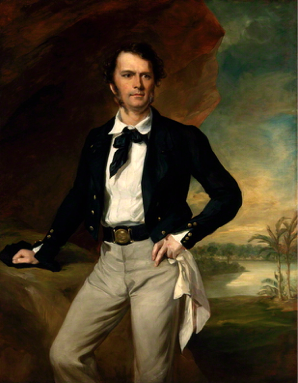 Portrait of Sir James Brooke by Sir Francis Grant
Portrait of Sir James Brooke by Sir Francis GrantNational Portrait Gallery London. Used with permission
What attack on Buenos Aires? It turns out there were two, one in 1806, which started well, but ended in a British defeat. The British had another go in 1807, which didn't end well either. Perhaps because both attacks were ultimately ignominious failures, the British don't dwell on them. That's certainly not true in Argentina: a major street in Buenos Aires is called La Defensa, commemorating the fact that it was where the 1807 attack was turned back.
Anyway, the initial success of the 1806 attack was probably at least partly due to the efforts of James Burke. What exactly he did was not easy to discover. There were stories about him in Spanish, but my Spanish wasn’t up to reading historical research. There seemed hardly anything about him in English. The one paper I found was in an Anglo-Irish journal (Burke was Irish) not widely available in England. Even the British Library had lost their copy and had to send out for one specially.
It turned out that Burke was quite an exciting character. He had fought in Haiti and travelled widely in South America and Europe. His name was linked with a succession of women, including the queen of Spain, a princess in Brazil and the Viceroy’s mistress in Buenos Aires. Little is known of his later life, but he remained on the Army List, with a pattern of promotion and transfers between regiments that suggested that he continued to work primarily as a spy, rather than as a straightforward soldier.
James Burke, it turned out, was the ideal hero. Brave, cunning, irresistible to women he was, indeed, the James Bond of the Napoleonic wars. The first story about him, Burke in the Land of Silver, was based closely on his real exploits and practically wrote itself. Burke has gone on to have fictional adventures in Egypt and at Waterloo, with more planned for the future. He has, indeed, proved an inspiration, but not, perhaps, in the way that most people imagine writers become inspired.
Tom Williams
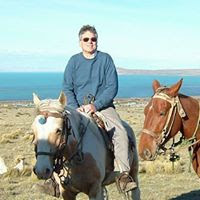 Have you ever noticed how many authors are described as ‘reclusive’? I have a lot of sympathy for them. My feeling is that authors generally like to hide at home with their laptops or their quill pens and write stuff. If they enjoyed being in the public eye, they’d be stand-up comics or pop stars.
Have you ever noticed how many authors are described as ‘reclusive’? I have a lot of sympathy for them. My feeling is that authors generally like to hide at home with their laptops or their quill pens and write stuff. If they enjoyed being in the public eye, they’d be stand-up comics or pop stars.Nowadays, though, writers are told that their audiences want to be able to relate to them as people. I’m not entirely sure about that. If you knew me, you might not want to relate to me at all. But here in hyperspace I apparently have to tell you that I’m young and good looking and live somewhere exciting with a beautiful partner, a son who is a brain surgeon and a daughter who is a swimwear model. Then you’ll buy my book.
Unfortunately, that’s not quite true. I’m older than you can possibly imagine. (Certainly older than I ever imagined until I suddenly woke up and realised that age had snuck up on me.) I live in Richmond, which is nice and on the outskirts of London which is a truly amazing city to live in. My wife is beautiful but, more importantly, she’s a lawyer, which is handy because a household with a writer in it always needs someone who can earn decent money. My son has left home and we never got round to the daughter.
We did have a ferret, which I thought would be an appropriately writer sort of thing to have around but he eventually got even older than me (in ferret years) and died. I’d try to say something snappy and amusing about that but we loved that ferret and snappy and amusing doesn’t quite cut it.
I street skate and ski and can dance a mean Argentine tango. I’ve spent a lot of my life writing very boring things for money (unless you’re in Customer Care, in which case ‘Dealing With Customer Complaints’ is really, really interesting). Now I’m writing for fun.
If you all buy my books, I’ll be able to finish the next ones and I’ll never have to write for the insurance industry again and that will be a good thing, yes? So you’ll not only get to read a brilliant novel but your karmic balance will move rapidly into credit.Can I go back to being reclusive now?
Tom loves to hear from readers. You can contact him: Website Facebook Twitter
Burke in the Land of Silver
"James Bond in breeches" - Paul Collard
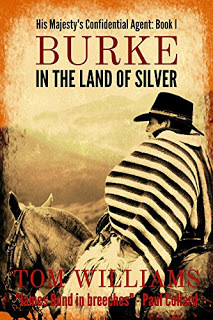 James Burke never set out to be a spy. But with Napoleon rampaging through Europe, the War Office needs agents and Burke isn’t given a choice. It’s no business for a gentleman, and disguising himself as a Buenos Aires leather merchant is a new low. His mission, though, means fighting alongside men who see the collapse of the old order giving them a chance to break free of Spanish colonial rule.
James Burke never set out to be a spy. But with Napoleon rampaging through Europe, the War Office needs agents and Burke isn’t given a choice. It’s no business for a gentleman, and disguising himself as a Buenos Aires leather merchant is a new low. His mission, though, means fighting alongside men who see the collapse of the old order giving them a chance to break free of Spanish colonial rule.He falls in love with the country – and with the beautiful Ana. Burke wants both to forward British interests and to free Argentina from Spain. But his new found selflessness comes up against the realities of international politics. When the British invade, his attempts to parley between the rebels and their new rulers leave everybody suspicious of him.
Despised by the British, imprisoned by the Spanish and with Ana leaving him for the rebel leader, it takes all Burke’s resolve and cunning to escape. Only after adventuring through the throne rooms and bedrooms of the Spanish court will he finally come back to Buenos Aires, to see Ana again and avenge himself on the man who betrayed him.
Amazon UK Amazon US
Published on April 01, 2018 23:00
The Coffee Pot Book Club
The Coffee Pot Book Club (formally Myths, Legends, Books, and Coffee Pots) was founded in 2015. Our goal was to create a platform that would help Historical Fiction, Historical Romance and Historical
The Coffee Pot Book Club (formally Myths, Legends, Books, and Coffee Pots) was founded in 2015. Our goal was to create a platform that would help Historical Fiction, Historical Romance and Historical Fantasy authors promote their books and find that sometimes elusive audience. The Coffee Pot Book Club soon became the place for readers to meet new authors (both traditionally published and independently) and discover their fabulous books.
...more
...more
- Mary Anne Yarde's profile
- 159 followers



